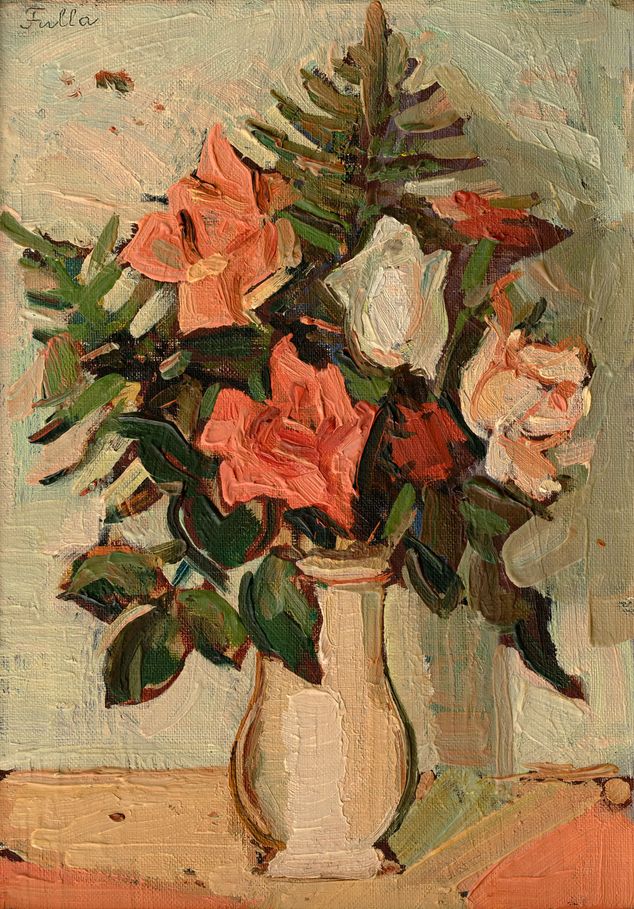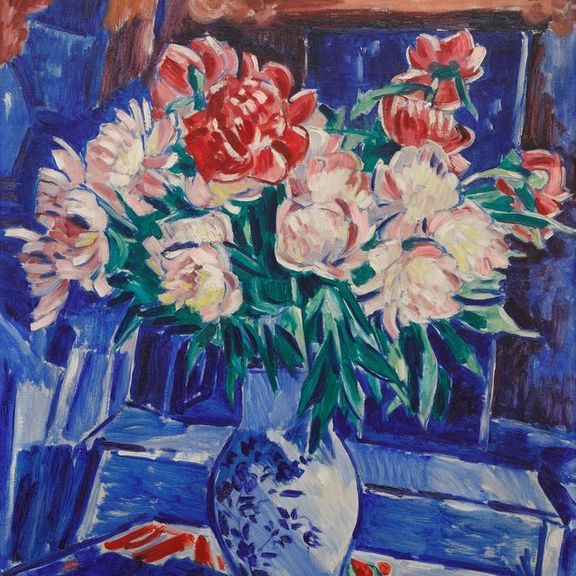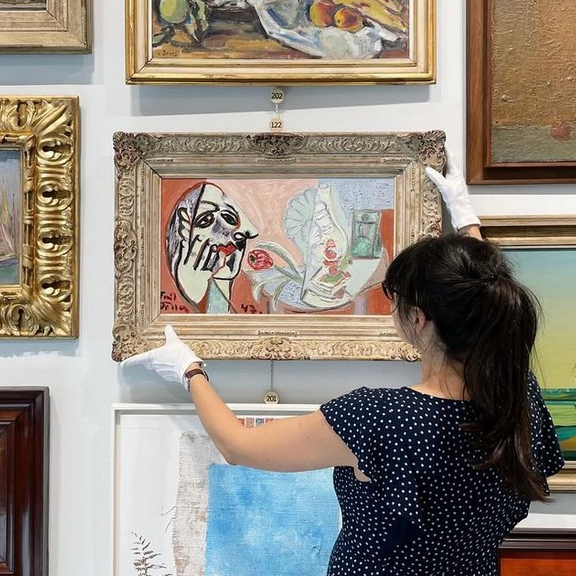
Auction 84th, Lot 217 This exceptional rediscovered work is a rare example of the intimate theme of still lifes created by Fulla, one of the fundamental personalities of Slovak modern art. A native of Rožumberok, he trained at the Academy of Arts, Architecture and Design in Prague. After returning to Slovakia he played a significant role in directing the local school of painting towards the more modern language of international art, through both teaching and his own artistic work. In the period around the mid-1930's Fulla's work shows a penchant for tradition - he often painted Slovakian landscapes and occasionally turned to portraits. He referred to these paintings as "factual art" and after an exhausting struggle for the use of modern morphology on the conservative Slovak art scene, they gave him the opportunity to relax and paint spontaneously on the basis of inspiration from surrounding stimuli. He focused on still lifes mainly in his early work, later on returning to them only very rarely. The work proves how Fulla was able to uniquely combine the stimuli of the European avant-garde with Slovak folk art. The still life is painted realistically, without the artist relinquishing some of the principles of modern art. While the blooming roses are created with dense but disciplined brushstrokes, in the background, which is simple in color, the artist experiments with the impressionist technique of short strokes. The canvas Little Roses thus perfectly represents his ultimate, relaxed way of painting. The work comes from the collection of a Czech friend of Fulla's and in 1965 it was briefly exhibited in the Slovak National Gallery. It is mentioned in the artist's own list under the same name. It is listed as missing in the latest monograph (K. Bajcurová: Ľudovít Fulla, Slovart 2009, p. 344, cat. no. 81). Assesed during consultations by prof. J. Zemina and PhDr. J. Ábelovský, CSc. From the attached expertise by PhDr. Katarína Bajcurová, CSc.: "[...] The authorship of the assessed work Roses [Little Roses] can be unambiguously attributed to Ľudovít Fulla on the basis of the above facts. This hitherto unknown painting from 1935 is a representative and exceptional work, and from a collector's point of view a unique discovery, from a group of artworks by Fulla referred to as “realistic” or “factual” paintings. [...] ".







